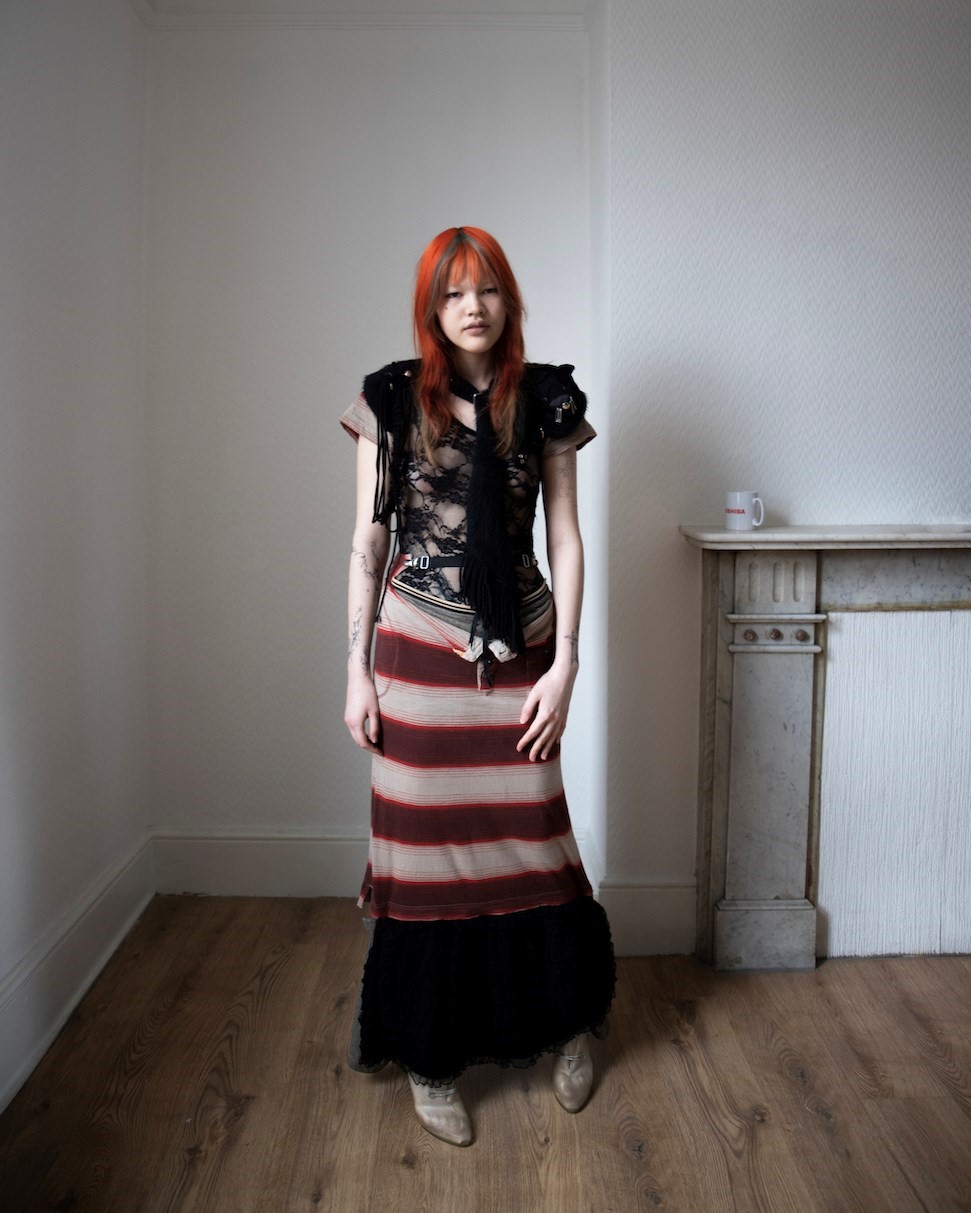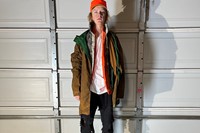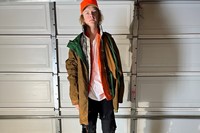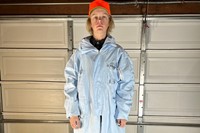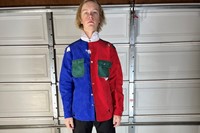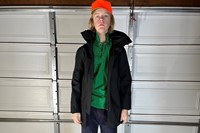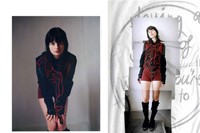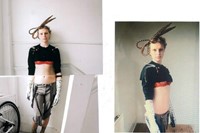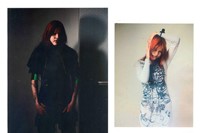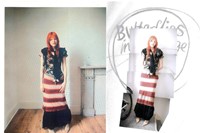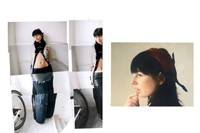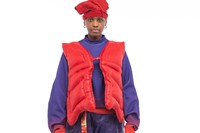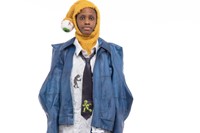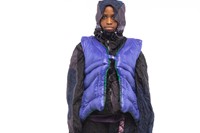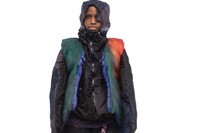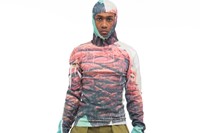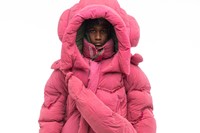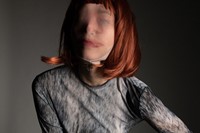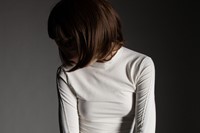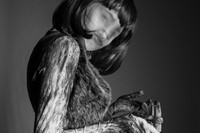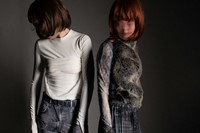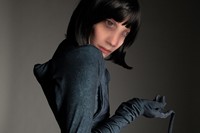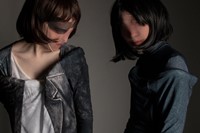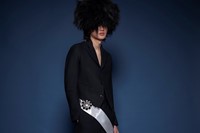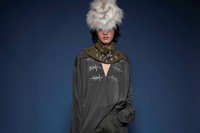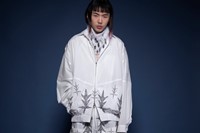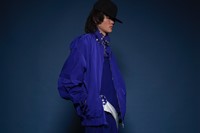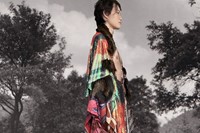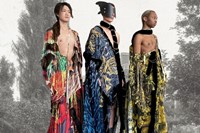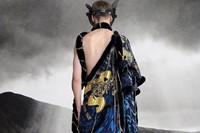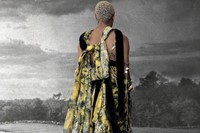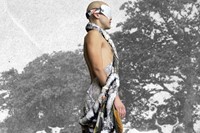Final year at any university can be turbulent – but perhaps none more so than at Central Saint Martins. With its glowing fashion esteem, a daunting list of radical alumni, and a reputation for some of the most rigorous, hard-nosed tutors in education, the roster of MA Fashion students graduating each year from the Granary Square campus inject an exciting energy into the industry. Acting not only as a mirror of our times, while also helping to shape the future with a new sartorial dialect, the students’ work culminates with a final collection – and the run-up to this can be fraught.
Fabio Piras, the course director of MA Fashion, reached out to Scottish-born filmmaker Liam Leslie, an alumni of the MA Fashion Communication course at CSM, to make a film representative of the entire fashion design pathway. The resulting film lenses the class of 2023 as they present their final collections to a panel of their tutors – some of the industry’s finest – baring their love and labour from the intense past years of schooling. Filmed on campus following the catwalk show in February, which showcased only 20 students’ collections, Turn to the Left films all 44 graduating students, grappling with the anxiety-inducing task of sharing their final pieces of work. “It was a very intense space, and I think I made it even more so,” says Leslie.
Soundtracked by murmurs of explanation, praise and critique against a suspenseful and repetitive droning, students are captured while focused in their studios, hurriedly navigating the corridors of the university and guiding models who are donning their designs; barely a smile is cracked throughout. “You can’t hide anything under those lamps. Every seam and dart was under inspection. Each collection was really being observed, and the models often didn’t know where to look,” says Leslie. “The film really studies the emotions on their faces. However, I think that the stark environment was a blessing for everyone – it emphasised everything the clothes were saying, or not saying in some cases.”
Below, AnOther speaks with six MA Fashion students graduating from the class of 2023. Each collection is a symbol of a fascinating backstory laid bare in textile and design; here, they unpick their globetrotting, era-spanning references.
Andrew Davis
“The collection is called American Apparel. All my references were pictures from home, my garage, my own clothes and these super high contrast, super saturated, almost cheap fabrics that you find at a Walmart in America. Even the buttons – there’s a cheapness to it. I made all the clothes here by hand, then I went back to America to the middle of nowhere in the mountains in Colorado [where Davis is from] to distress them and destroy them, and also shoot them with guns. It was a slice-of-life project. And I wanted them to accurately reflect the honest way of America.
“[I was] getting physical with the clothes that I’d sewn myself, tearing them apart with a drill, letting them burn in the sun during long summer days, lugging them into the forest and shooting at them with guns. Death, sport, politics, family, all loaded in one act – that is what America feels like. Being on the precipice of something really violent, but really beautiful, and observing in fear and amazement.
“I think that people here [in London] are more … I don’t want to say open-minded, but people here have been excited to see and hear about a part of the world that isn’t here. I think I haven’t shown it to too many people in America, but I actually think it’ll be more difficult because it feels so on the nose of what’s happening in real-time. I think there’s like a critical distance [here] that gives it a romanticism. There is more of an ‘artist/designer’ approach to my work where each piece feels emotional – it doesn’t feel like something I can produce in mass. Repetition is something I like to think about in my work, a lot of these pieces are just repeated styles. I like the idea that I make everything on my own, and I like the idea of a one-man factory where I make it on my little domestic sewing machine, maybe ten of these, and have this little world that I’m building.”
“I like the idea that I make everything on my own, and I like the idea of a one-man factory“ – Andrew Davis
Ellen Poppy Hill
“In my BA I was doing loads of drawing, and making up this world. I drew for a whole year straight, almost every day, and I was looking through my mum’s library too. My mum’s a set designer, my dad’s an actor, so we have loads and loads of plays, books about set design and costume and stuff like that. This then led me to the idea of proverbs and idioms, and the visuals of that was something I really enjoyed. I printed them out and related them to what age I was – I made this long strip of images – and it started from things that remind me of childhood through to things that remind me of adulthood; all the ones of cats and bunnies reminded me of when I was a kid, and then it went on to birds and swans, which reminded me of [now as] an adult.
“I wanted to keep this idea because it was related to coming of age, because when we’re looking at the images from beginning to end, I was like, ‘OK, this is telling a story of where I am now.’ I chopped [the proverbs] up in half, and put them [back] together, and they made these like quiet nonsensical ones, which I thought were really beautiful. So those became the main focus of the whole collection. Like having butterflies in your stomach; when you’re a kid, you’re like, ‘Oh, I just feel a bit nervous.’ But then when you’re 23 and you meet someone, they actually like you, you’re like, ‘Oh my god, this is like agony.’ The things that you think you learn, they’re not really what they seem. They’re a bit more twisted. They’re a bit more cynical.
“Everything is upcycled, it’s all from charity shops, and it’s all quite personal. I’m quite emotional with my work. I don’t use patterns, I cut everything freehand, and let them just fall into place. I’ve only ever bought new fabric once in my life – I couldn’t afford it as a kid, I always worked in charity shops. I have been obsessed with secondhand and vintage stuff since I can remember. If I design it wholeheartedly, then it no longer is the thing it used to be. It’s no longer like a secondhand garment that is torn apart – it’s mine, and it’s Ellen. If you didn’t know [that it’s upcycled], you probably wouldn’t have questioned it necessarily. Some things you definitely do – this has armpit stains, but I think that’s really funny. Because it’s like the old jacket lining, and I don’t know how old that was, and I never will.”
Yaku Stapleton
“My base is in scale and perception, and manipulating form from human form or natural form. I was looking for new points of reference, just to kind of see where I can take things. And then I came across the Afrofuturism movement, and I was really attracted to it. It was mainly the written aspect of it – the philosophical side of it – where it explained that you can create a reality that’s different from the one that’s given to you. And I thought, ‘How could I kind of place myself in fantasy?’ I’ve done this before when I was super young playing these games, RuneScape in particular. I was like, ‘Oh, I was doing Afrofuturism. I just didn’t know.’ I thought about how I could bring this to life. I thought the best way would be almost like a family reunion in space. So I started making these character designs based on my family members.
“I’d imagine them in this kind of limitless world. I started with a description of what they’re like, and then how that translates into this world, so it immediately made the design process quite easy. [Yaku’s sister] Stephanie, for example, what would her feet look like? What do her shoes look like? For my mum, I wanted it to be a kind of humanoid, so you could see it was her but I wanted the balance of her personality to be represented in having a sword and a shield. And then I just wanted to create this tough, Godzilla-type skin texture to armour her in this world. I started building a storyline to go with the characters, which helped with some of them as well, because I just thought, ‘OK, what are they in this world? What were they doing before this reunion happened?’ I imagined this world had been in a war of some sort, and the planet had a continental drift, and one side had met peace with whoever they were fighting.
“I was really trying to find the balance between ‘couture costume design’ and ’functional fashion design,’ or what I consider functional fashion design. I find it a fun challenge to be able to tell this story in extravagant ways, but also be able to convey it in something that can exist outside of the collection, and begin to exist on its own.”
“This collection was also about the journey of self-discovery and self-acceptance, to not be ashamed of who you are and where you come from“ – Jean Flogie
Alena Nevedrova
“I’m from Russia, and I did my BA in Russia. Politically, it’s a very hard country to be in. In 2020 there were protests against [Alexei] Navalny’s imprisonment, and my friends [and I] wanted to go there. My previous university sent us an email saying that if we went, we would be expelled. In order to go there we hid our faces – we wore masks to escape from CCTV recognition in the underground. This was the starting point of my collection – I use a lot of prints of ordinary garments on actual clothes to hide the identity of a woman, and the same happens with faces. Also, there are these male or female shoes – you can’t really say who they are for: a man or a woman.
“With the skirts, the length could be changed, so it’s adjustable. It’s very important – this adjustability – because this is the feeling of choice, and it’s very important in the protest that you can actually change something. You can see there are also connected fingers and connected sleeves, which refers to arrests during protests. I imagine my woman as someone who just woke up in the middle of the night. She’s wearing her slip dress, and she needs to run. She’s taken her leather coat and ran away from her house.
“I decided to work with the bridal thing, so I used a print of a wedding dress which I found in a charity shop. If you turn it into a top, it has another print of a bulletproof jacket. I decided to make the wedding dress because – for a lot of my friends and acquaintances – weddings have become a kind of escape. If one partner gets a visa, it’s easier for another partner to get a visa to escape from the country.
“It’s hard now to be Russian and to show your protest, because a lot of people are caught by police because of their beliefs, and they could be sent to prison. The woman I imagined is inside this totalitarian regime. She wants to show her feelings about it, but she doesn’t want to be caught for her beliefs. That’s why she uses camouflage. It’s difficult emotionally, because as an artist with such a national identity, you’re thinking about what you’re allowed to do, what you’re not allowed to do, you have a lot of limitations. I decided to work with my own experience and the experience of my friends. For me, it’s very sincere.”
Samuel Slattery
“The collection is called Milky Way in reference to this French electro-dance called tecktonik. I lived in France during my teenage years, and when I got there, there was this whole electronic movement happening in schools where these adolescent boys had these battles, with all-out neon and like those big designer belts. I wanted to channel that into the collection. I wanted to bring in military, and then give it a bit of tailoring because I studied that in college and did a couple of tailoring internships. What I like about military is that uniform aspect, and I feel like there is something incredibly sexy about a man in uniform. It’s that kind of restraint and homogenised elegance.
“So this is really about mish-mashing, clashing, low and high. My dad used to run an IT company, very white collar and preppy, whereas my step-dad is super into Harley-Davidsons, is a bit of a rebel, a maverick – a very hegemonic masculinity idea. This collection is my answer to what masculinity is to me, which is these things like teenagers getting into a rave.
“I went for a slightly more monochrome palette, which brings military restraint back into the mix, offset by these really bold cobalts and neon green, and then khaki, which references the military as well. For me, it’s really about the pleasure of dressing up for yourself – like, not trying to sleep with anyone or anything. We had one class here that asked, ’What is the thing that gives you the most pleasure? Put that into your clothes.’ For me, it’s putting on SoundCloud and trying on those different outfits in the mirror and just being in your own bubble.”
Jean Flogie
“I always go back to nature. I’m from Slovenia, the deep, deep countryside. I had this dream, this fantasy, because I felt oppressed living where I lived, like a bird trapped in a cage. For this collection, I really wanted to show me moving from there to London, which is so rich in cultural diversity, where we are able to be more open about who we are. I wanted to capture this feeling of the bird who was trapped in a cage being released for the first time, with this hunger for freedom. I started looking at moths, and I found this really great book – I was blown away by what nature can create. It’s interesting, butterflies and animals have their printed pattern as a camouflage to hide away from predators, but can you put them on this white background and it says something else. I was looking at this idea of blending and standing out.
“The collection has lots of heavy prints and embroideries and screen printing, faux fur and pearls dipped in gold. But for the shoes, I made flat boots instead of heels and put mud on them because when I was growing up in the countryside, we really didn’t have roads, so when I was going to the bus to school there was no route so I had to go through the woods. My shoes would always get muddy and I felt so embarrassed. There were these city girls and boys in their white sneakers, and mine were dirty and muddy. This collection was also about the journey of self-discovery and self-acceptance, to not be ashamed of who you are and where you come from.
“I once went to a coffee shop on Sunday morning wearing one of my designs, and I thought, ‘Oh my god, people will look, and it would be scary.’ People looked, but they didn’t care. It was liberating because you still think people will judge, but then you do it and you realise they really don’t care. I guess it’s interesting that sometimes you create problems in your head. For me, this course wasn’t just about fashion design … it was a very deep self-discovery.”
